A gym ball – also known as an exercise ball, Swiss ball, stability ball, or physio ball – is a large inflatable ball made from soft, elastic PVC. Its unstable surface forces the body to engage multiple muscle groups simultaneously and is incredibly effective for improving balance, core strength, posture, and coordination.
Gym balls come in different sizes, typically ranging from 45 to 85 centimeters in diameter. The correct size will depend on your height: when sitting on the ball, your knees should be at a 90-degree angle with feet flat on the floor.
Lightweight and portable, gym balls are commonly found in both gyms and physical therapy clinics. And they’re truly accessible for everyone – from beginners learning how to activate their core to elite athletes using it to complement dynamic or rehab-focused training.
We’ll break down all the health benefits and explain why you should exercise with a gym ball below.
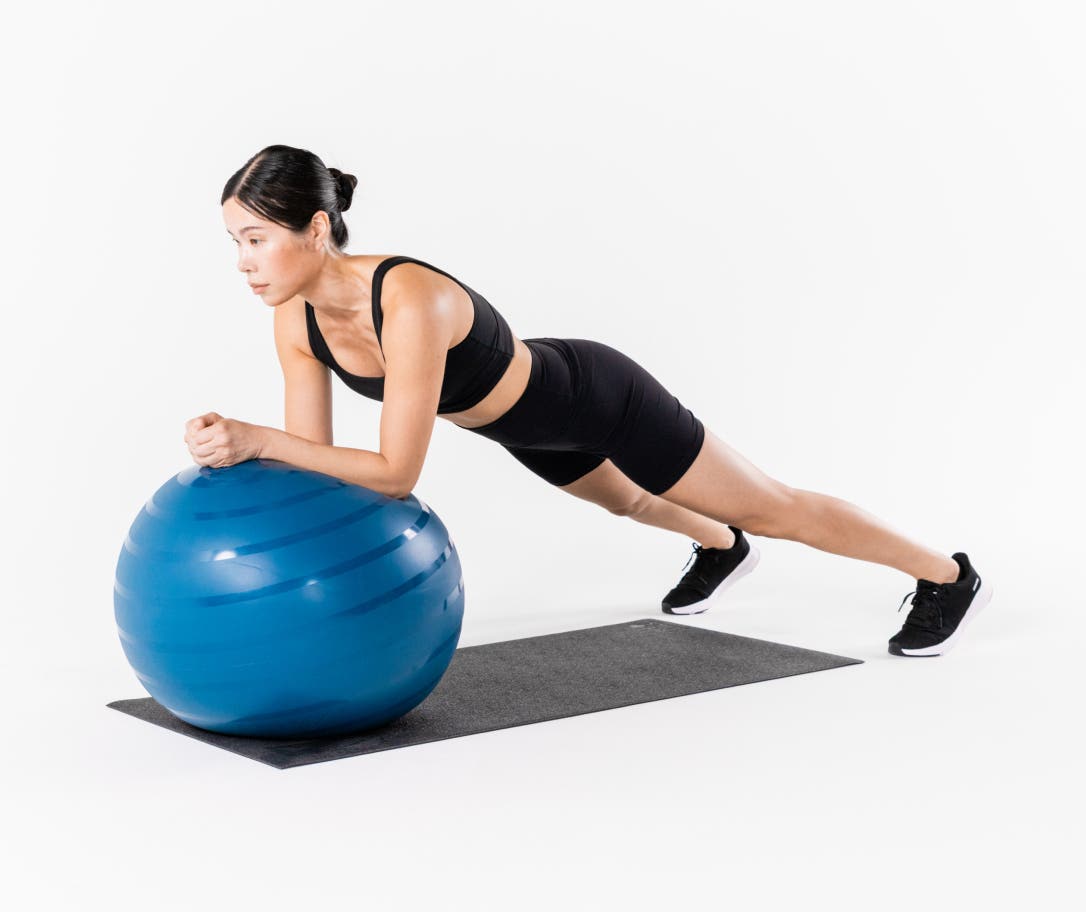
Benefits of using a gym ball
Core activation
Perhaps the most well-known benefit of using a gym ball is its ability to stimulate the core muscles. Because the ball is inherently unstable, your body has to work continuously to maintain balance.
This need for stability automatically activates the deep abdominal muscles, including the transverse abdominis, internal obliques, and the muscles of the lower back.
Whether you’re performing core exercises like Gym Ball Crunches, a Gym Ball Plank Hold, or even simply sitting on the ball, your core is constantly working.1
Constant balance requirements
Even static exercises require micro-adjustments to maintain position when done on a gym ball. Unlike stable surfaces, the gym ball introduces an element of instability that forces the body to make small, continuous adjustments.
These micro-adjustments not only help improve balance but also enhance proprioception – your body’s awareness of its position in space.
This is particularly beneficial for athletes who rely on quick reactions and stability under pressure, such as skiers, surfers, and martial artists.
Improved stability and posture
Regular use of a gym ball helps build a stronger and more resilient body, especially in areas that are often overlooked in traditional weight training. The ball encourages neutral spinal alignment and trains your postural muscles in a functional way.
Over time, this can lead to better posture, reduced back pain, and a lower risk of injury, particularly in the lower back and hips. It also improves coordination between muscle groups, enhancing overall movement efficiency.
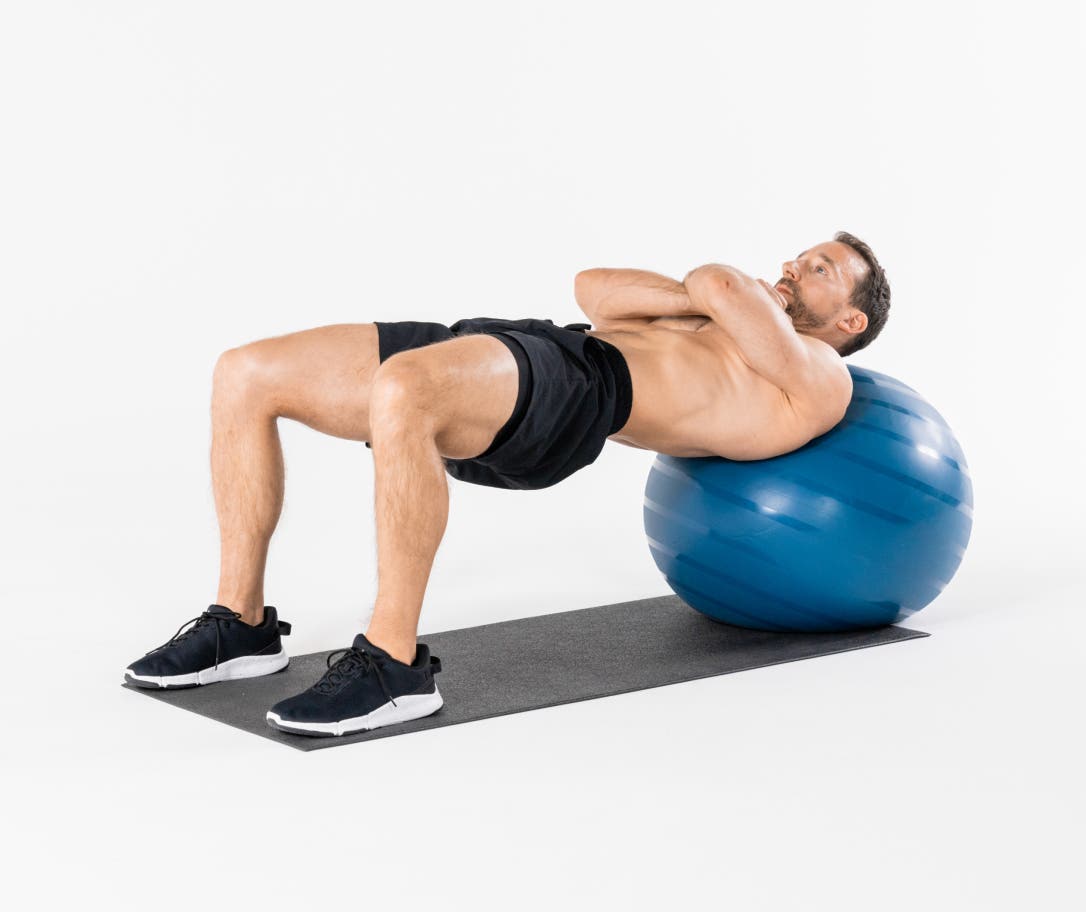
Strength development
While gym balls are great for strengthening your core, they can also be used to build muscular strength across your entire body.
When combined with bodyweight exercises or light weights, the ball makes movements more challenging by engaging stabilizers that wouldn’t be activated on a flat surface. Exercises like Hip Thrusts, Pushups, or Leg Curls receive an additional challenge because of the need for control and balance.2
Variety and versatility
The gym ball is lightweight, inexpensive, and can be used in a wide variety of workouts, ranging from gentle rehab routines to intense strength and conditioning sessions.
It’s useful for Warmups, Cooldowns, and everything in between. Because it engages the whole body, the ball can make even basic movements feel fresh and dynamic.3
Bonus – it can also double as a chair for short periods of active sitting, promoting better posture even while you work or watch TV.
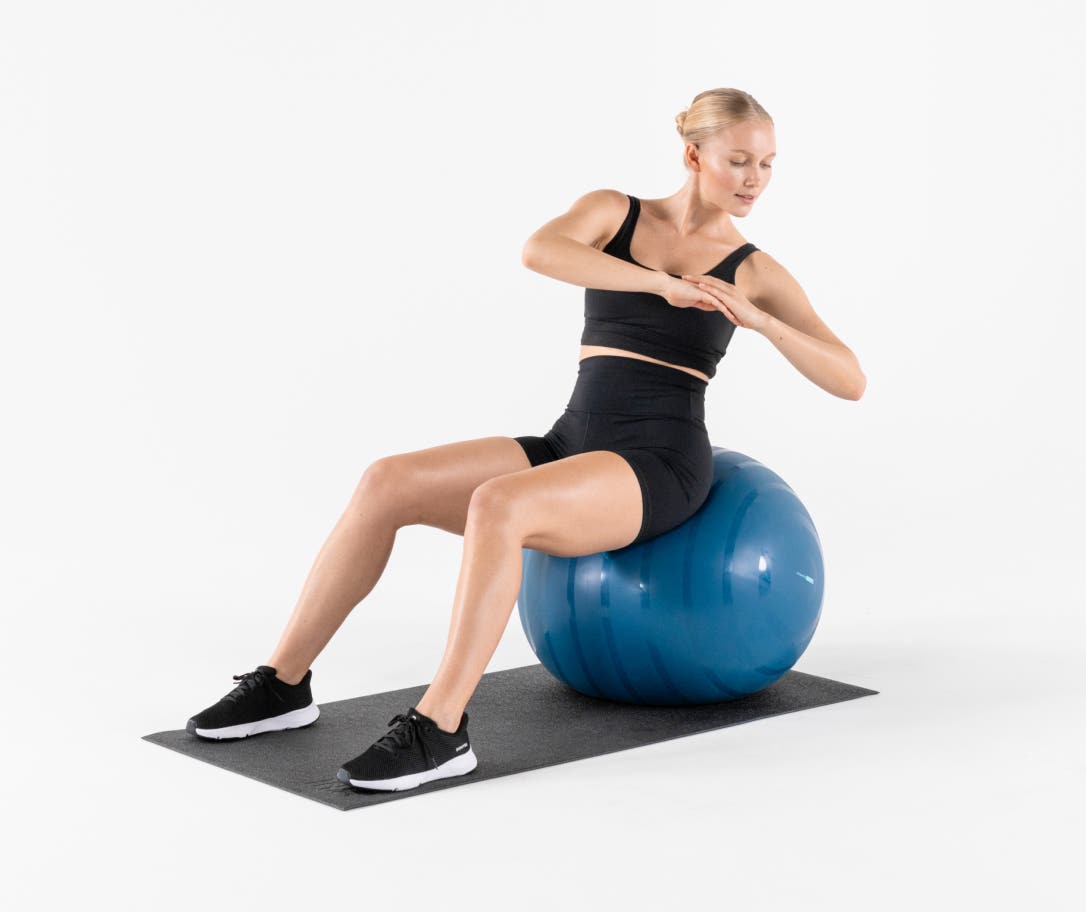
Drawbacks
Despite its many benefits, the gym ball does have a few limitations. Because it introduces instability, exercises can be more difficult to perform correctly, especially for beginners. Poor form or lack of body awareness can lead to ineffective workouts or even injury.
Additionally, certain exercises may not be appropriate for individuals with specific balance issues or joint problems. While the ball is soft and low to the ground, falling off or losing your balance during an exercise can still result in strain, especially to the wrists, lower back, or knees.
Another drawback is that, unlike machines that isolate muscles or provide external load, gym balls rely heavily on body weight and balance, which may not provide enough resistance for advanced strength development.
As a result, those seeking maximal hypertrophy or power gains should use gym ball training alongside traditional resistance exercises.
3 Safety tips
To use a gym ball safely and effectively, follow these essential guidelines:
- Check your environment: Ensure the area around you is clear of obstacles, sharp objects, or slippery surfaces. Use a non-slip mat or carpet to prevent the ball from sliding unexpectedly. Make sure there’s enough space to roll or extend your arms and legs fully during exercises.
- Use it on the floor away from objects: Never place the gym ball on a raised surface or use it near walls or furniture that could interfere with movement. Keeping your workout space open minimizes the risk of bumping into something or losing your balance.
- Position yourself correctly: When sitting or lying on the ball, maintain neutral spine alignment and ensure your feet are firmly planted on the ground.
Avoid overreaching, jerking, or leaning too far off the ball, especially when learning a new movement. If needed, have a wall or sturdy object nearby for initial support.
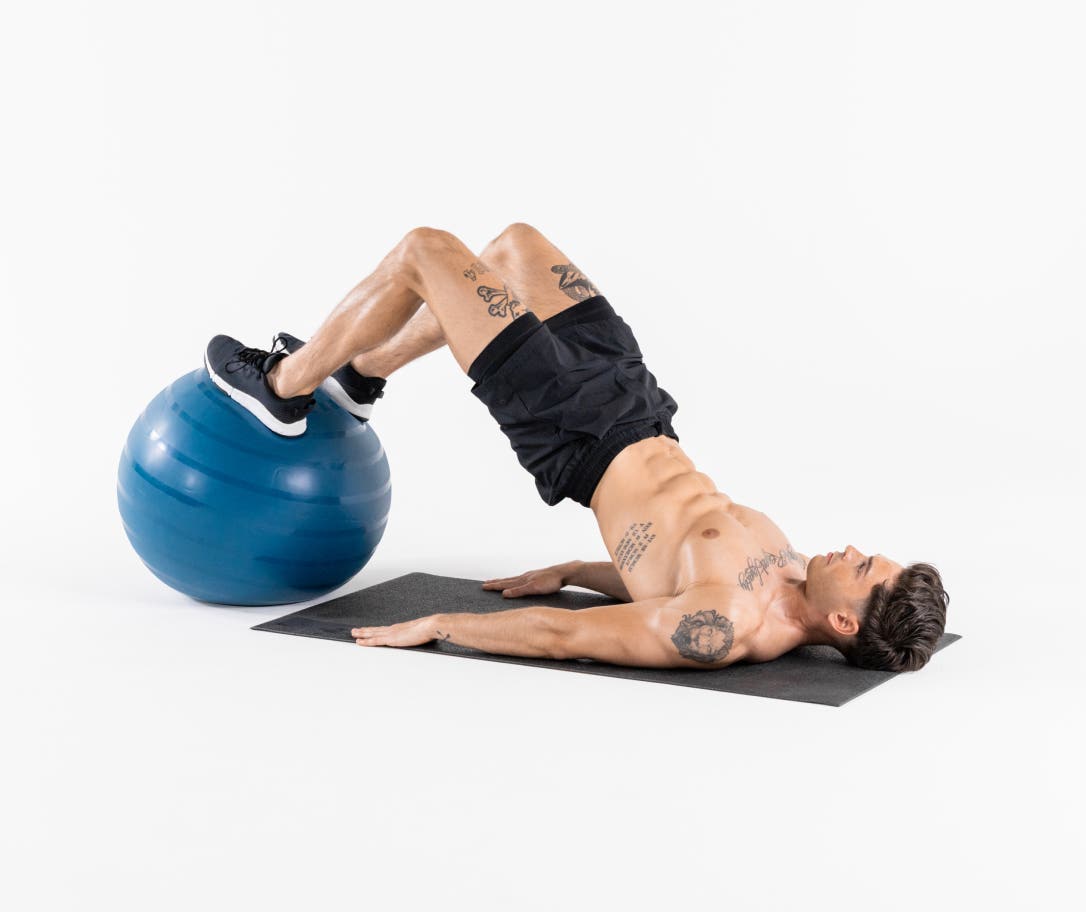
Gym ball exercises
Here are sample gym ball exercises for beginner, intermediate, and advanced athletes, all available in the Freeletics app! These movements emphasize core engagement, strength, and balance. You can scale difficulty by adjusting tempo, repetitions, or stability demands.
Beginner
- Gym Ball Crunches: Lie on the ball with your lower back supported, feet hip-width width and flat on the floor. Crunch up, engaging your abs before returning to the starting position. This is a gentle yet effective introduction to core training on an unstable surface.
- Gym Ball Hip Raises: Lie on the floor with your feet on the ball. Press through your feet to move your hips upward until your body forms a straight line from shoulders to knees. This strengthens the glutes and hamstrings while improving pelvic stability.
- Gym Ball Plank Hold: Place your forearms on the ball and extend your legs behind you into a plank. Hold this position while keeping your body rigid and core tight.
Intermediate
- Gym Ball Pushups: Place your hands on the ball and perform Pushups. The unstable base challenges chest, shoulders, triceps, and stabilizers in the wrists and core.
- Gym Ball Hip Thrusts: Rest your upper back on the ball with feet flat on the ground. Lower your hips toward the floor and thrust upward. Squeeze your glutes at the top for maximal activation.
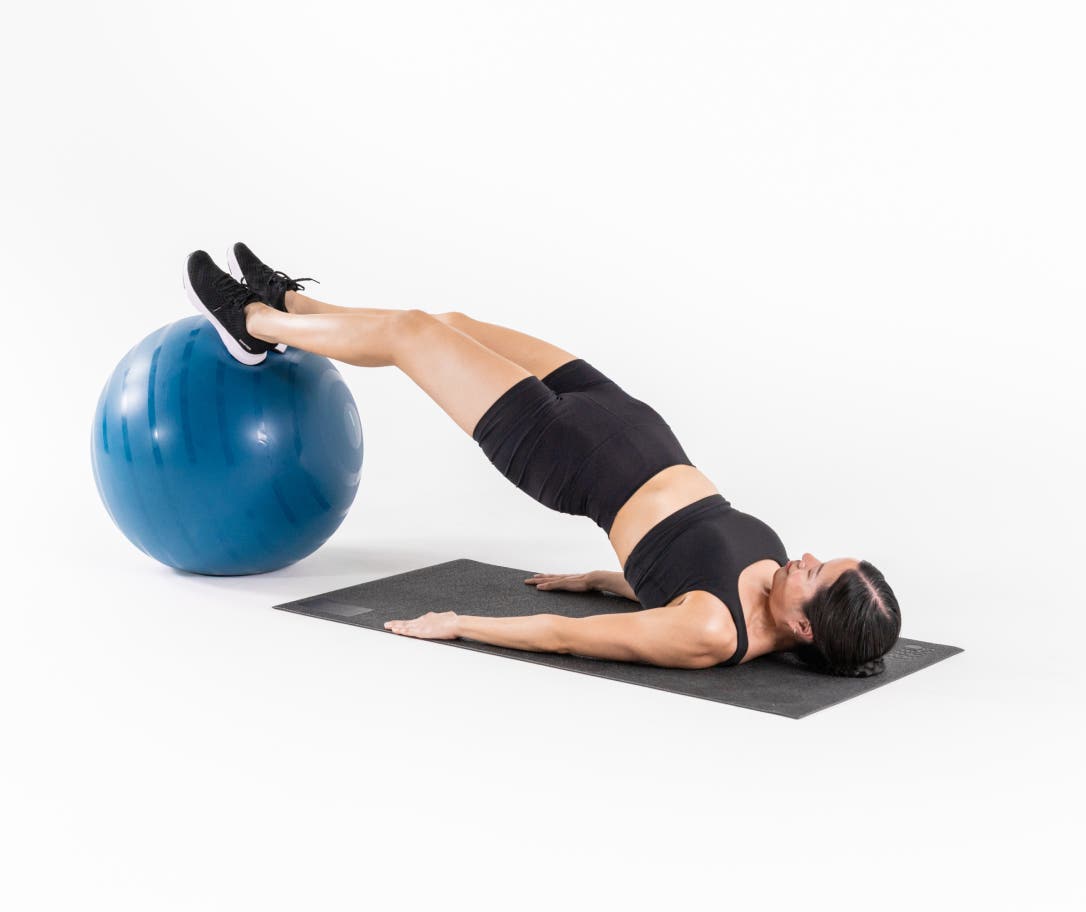
Advanced
- Gym Ball Stir the Pot: Begin in a plank with your forearms on the ball. Make slow, controlled circles with your elbows as if stirring a pot. This highly dynamic core challenge activates deep stabilizers and increases time under tension.
- Gym Ball Rollouts: Kneel on the floor with your forearms on the ball. Slowly roll the ball forward, extending your body, then pull it back. This movement targets the entire anterior chain, including the abs, shoulders, and hip flexors.
- Gym Ball Leg Curls: Lie on your back with heels on the ball and lift your hips. Bend your knees to roll the ball toward your glutes, then extend again. This hamstring-dominant movement is a great bodyweight alternative to machine curls.
Let’s recap
The gym ball is a low-cost, high-impact tool that adds challenge and versatility to any training routine. It enhances core activation, stability, balance, and strength through constant engagement of deep muscle systems. While it has some limitations and safety considerations, it remains a highly effective option for people at all fitness levels.
With proper technique and progression, the gym ball can help transform everyday workouts into full-body training sessions that improve posture, coordination, and functional strength.
Sources
[1] American Council on Exercise. (n.d.). Keli Roberts’ Ballast Ball Workout. Available here
[2] Marshall, P. W., & Murphy, B. A. (2006). Changes in muscle activity and perceived exertion during exercises performed on a Swiss ball. Applied Physiology, Nutrition, and Metabolism, 31(4), 376–383.
[3] Behm, D. G., & Colado Sanchez, J. C. (2013). Instability resistance training across the exercise continuum. Sports Health, 5(6), 500–503.